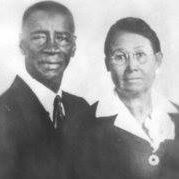Richard Howell Bailey
age ~73
from Mansfield, TX
- Also known as:
-
- Richard H Bailey
- Howell H Bailey
Richard Bailey Phones & Addresses
- Mansfield, TX
- Grand Prairie, TX
- Arlington, TX
- Lakeland, FL
- Fort Worth, TX
- Dallas, TX
Lawyers & Attorneys

Richard James Bailey - Lawyer
view sourceLicenses:
New Jersey - Active 2013

Richard Bailey - Lawyer
view sourceOffice:
Richard M. Bailey
ISLN:
909308337
Admitted:
1982
University:
University of Connecticut, B.A., 1975
Law School:
Western New England College, J.D., 1982

Richard Bailey - Lawyer
view sourceISLN:
921982585
Admitted:
1981
Law School:
University of San Francisco, J.D.
Name / Title
Company / Classification
Phones & Addresses
Envirosoil Services Inc.
Topsoil
Topsoil
8831 Carmanah Terrace, Victoria, BC V8L 5E9
2506550942, 2506550943
2506550942, 2506550943
Owner
Rich Realty, Inc.
Property Management. Real Estate
Property Management. Real Estate
8230 E. Broadway Blvd, Suite W-8, Tucson, AZ 85710
5207601999, 5207602444
5207601999, 5207602444
President
Bailey Water Works Inc
Drinking Place Direct Retail Sales
Drinking Place Direct Retail Sales
1335 E Pleasant Run Rd, Desoto, TX 75115
9722280550
9722280550
Owner
RICHARD BAILEY CONSTRUCTION, LLC
151 Crk, Paris, TX 75460
1133 Brackeen Dr, Graford, TX 76449
3424 Thrush Dr, Irving, TX 75062
1133 Brackeen Dr, Graford, TX 76449
3424 Thrush Dr, Irving, TX 75062
President, Director
Richard A. Bailey, Inc
Business Services
Business Services
4808 Grinstein Dr, Keller, TX 76244
Director
Valley Dale Acres Civic Association Incorporated
Civic/Social Association
Civic/Social Association
37417 Attica Ave, Zephyrhills, FL 33542
37544 Attica Ave, Zephyrhills, FL 33542
37538 Attica Ave, Zephyrhills, FL 33542
37544 Attica Ave, Zephyrhills, FL 33542
37538 Attica Ave, Zephyrhills, FL 33542
Director
Richard Bailey, Professional Forester, Inc
Nonclassifiable Establishments · Shrub/Tree Services · Shrub/Tree Services Ret Nursery/Garden Supplies Landscape Services
Nonclassifiable Establishments · Shrub/Tree Services · Shrub/Tree Services Ret Nursery/Garden Supplies Landscape Services
710 Oakfield Dr, Brandon, FL 33511
10313 Us Hwy 301 S, Riverview, FL 33578
11203 Us Hwy 301 S, Riverview, FL 33578
10313 Us Hwy 301 S, Riverview, FL 33578
11203 Us Hwy 301 S, Riverview, FL 33578
Director, President
RICH BAILEY AND ASSOCIATES, INC
Mfg Representative Children's Clothing & Furniture
Mfg Representative Children's Clothing & Furniture
243 Meadowlark Dr %Richard A Bailey, Richardson, TX 75080
3901 Salem Ct, Plano, TX 75093
9729649055
3901 Salem Ct, Plano, TX 75093
9729649055
Resumes

Richard Bailey Dallas, TX
view sourceWork:
Friends of the Library
2014 to 2000
Board of Directors Friends of the Library
2012 to 2000 Friends of the Library
2009 to 2000
Board of Directors Finalist for Elixer Press
2013 to 2013 Friends of the Library
Dallas, TX
2012 to 2012 Friends of the Library
Los Angeles, CA
2010 to 2012 Friends of the Library
Dallas, TX
2009 to 2010
WRITER Published in Sojourn Literary Magazine
2009 to 2009
2014 to 2000
Board of Directors Friends of the Library
2012 to 2000 Friends of the Library
2009 to 2000
Board of Directors Finalist for Elixer Press
2013 to 2013 Friends of the Library
Dallas, TX
2012 to 2012 Friends of the Library
Los Angeles, CA
2010 to 2012 Friends of the Library
Dallas, TX
2009 to 2010
WRITER Published in Sojourn Literary Magazine
2009 to 2009
Education:
University of Texas at Dallas
Dallas, TX
2010
Master of Arts in Humanities University of Texas at Austin
Austin, TX
1992
Bachelor of Science in Radio-Television-Film
Dallas, TX
2010
Master of Arts in Humanities University of Texas at Austin
Austin, TX
1992
Bachelor of Science in Radio-Television-Film
Real Estate Brokers

Richard Bailey, Vancourver WA
view sourceSpecialties:
Buyer's Agent
Listing Agent
Consulting
Listing Agent
Consulting
Work:
Realty Pro
1503 Ne 78Th Street, Suite #7
9256400458 (Office)
1503 Ne 78Th Street, Suite #7
9256400458 (Office)
License Records
Richard H Bailey
Address:
1423 Caplin Dr, Arlington, TX 76018
Phone:
2143926885
License #:
5779 - Active
Category:
Master Electrician
Expiration Date:
Mar 31, 2017
Richard M Bailey
License #:
CDS00012 - Expired
Category:
Chemical Dependency Profession
Issued Date:
Nov 14, 1995
Expiration Date:
Jan 10, 2014
Type:
Chemical Dependency Clinical Supervisor
Richard I Bailey
License #:
RS154330A - Expired
Category:
Real Estate Commission
Type:
Real Estate Salesperson-Standard
Medicine Doctors

Richard W. Bailey
view sourceSpecialties:
Family Medicine
Work:
Preferred Health Care
686 S Hwy 25 W, Williamsburg, KY 40769
6065495052 (phone), 6065492718 (fax)
686 S Hwy 25 W, Williamsburg, KY 40769
6065495052 (phone), 6065492718 (fax)
Education:
Medical School
Thomas Jefferson University, Jefferson Medical College
Graduated: 1992
Thomas Jefferson University, Jefferson Medical College
Graduated: 1992
Procedures:
Arthrocentesis
Conditions:
Acute Bronchitis
Allergic Rhinitis
Anxiety Dissociative and Somatoform Disorders
Anxiety Phobic Disorders
Attention Deficit Disorder (ADD)
Allergic Rhinitis
Anxiety Dissociative and Somatoform Disorders
Anxiety Phobic Disorders
Attention Deficit Disorder (ADD)
Languages:
English
Description:
Dr. Bailey graduated from the Thomas Jefferson University, Jefferson Medical College in 1992. He works in Williamsburg, KY and specializes in Family Medicine.

Richard L. Bailey
view sourceSpecialties:
Otolaryngology, Plastic Surgery within the Head & Neck
Work:
Bullhead ENT
3750 Hwy 95 STE 101, Bullhead City, AZ 86442
9287631020 (phone), 9287632076 (fax)
3750 Hwy 95 STE 101, Bullhead City, AZ 86442
9287631020 (phone), 9287632076 (fax)
Education:
Medical School
Emory University School of Medicine
Graduated: 1989
Emory University School of Medicine
Graduated: 1989
Procedures:
Sinus Surgery
Allergen Immunotherapy
Hearing Evaluation
Myringotomy and Tympanotomy
Rhinoplasty
Skull/Facial Bone Fractures and Dislocations
Tonsillectomy or Adenoidectomy
Allergen Immunotherapy
Hearing Evaluation
Myringotomy and Tympanotomy
Rhinoplasty
Skull/Facial Bone Fractures and Dislocations
Tonsillectomy or Adenoidectomy
Conditions:
Acute Pharyngitis
Acute Sinusitis
Acute Upper Respiratory Tract Infections
Allergic Rhinitis
Benign Paroxysmal Positional Vertigo
Acute Sinusitis
Acute Upper Respiratory Tract Infections
Allergic Rhinitis
Benign Paroxysmal Positional Vertigo
Languages:
English
Description:
Dr. Bailey graduated from the Emory University School of Medicine in 1989. He works in Bullhead City, AZ and specializes in Otolaryngology and Plastic Surgery within the Head & Neck. Dr. Bailey is affiliated with Kingman Regional Medical Center and Western Arizona Regional Medical Center.

Richard J. Bailey
view sourceSpecialties:
Chiropractor
Work:
Brookfield Health & Injury Center
304 Federal Rd STE 109, Brookfield, CT 06804
2037755555 (phone), 2037750782 (fax)
304 Federal Rd STE 109, Brookfield, CT 06804
2037755555 (phone), 2037750782 (fax)
Procedures:
Chiropractic Manipulative Treatment
Conditions:
Intervertebral Disc Degeneration
Sciatica
Scoliosis or Kyphoscoliosis
Spinal Stenosis
Sciatica
Scoliosis or Kyphoscoliosis
Spinal Stenosis
Languages:
English
Spanish
Spanish
Description:
Dr. Bailey works in Brookfield, CT and specializes in Chiropractor.

Richard H. Bailey
view sourceSpecialties:
Internal Medicine
Work:
Riverview Hospitalist Association
410 Dewey St, Wisconsin Rapids, WI 54494
7154236060 (phone), 7154227764 (fax)
410 Dewey St, Wisconsin Rapids, WI 54494
7154236060 (phone), 7154227764 (fax)
Education:
Medical School
University of Missouri, Columbia School of Medicine
Graduated: 1993
University of Missouri, Columbia School of Medicine
Graduated: 1993
Conditions:
Atrial Fibrillation and Atrial Flutter
Chronic Bronchitis
Heart Failure
Acute Myocardial Infarction (AMI)
Acute Pancreatitis
Chronic Bronchitis
Heart Failure
Acute Myocardial Infarction (AMI)
Acute Pancreatitis
Languages:
English
Description:
Dr. Bailey graduated from the University of Missouri, Columbia School of Medicine in 1993. He works in Wisconsin Rapids, WI and specializes in Internal Medicine. Dr. Bailey is affiliated with Aspirus Riverview Hospital & Clinics.

Richard A. Bailey
view sourceSpecialties:
Family Medicine
Work:
Healthridge Medical Center
315 Struthers Liberty Rd STE 1, Campbell, OH 44405
3307501333 (phone), 3307500203 (fax)
315 Struthers Liberty Rd STE 1, Campbell, OH 44405
3307501333 (phone), 3307500203 (fax)
Languages:
English
Spanish
Spanish
Description:
Mr. Bailey works in Campbell, OH and specializes in Family Medicine.

Richard Lefroy Bailey
view sourceSpecialties:
Otolaryngology
Otolaryngic Allergy
Otolaryngology/Facial Plastic Surgery
Pediatrics
Plastic and Reconstructive Surgery
Otolaryngic Allergy
Otolaryngology/Facial Plastic Surgery
Pediatrics
Plastic and Reconstructive Surgery
Education:
Emory University(1989)
Wikipedia References

Richard Bailey (Historian)
Us Patents
-
Process Monitoring For Ferroelectric Memory Devices With In-Line Retention Test
view source -
US Patent:7149137, Dec 12, 2006
-
Filed:Dec 30, 2004
-
Appl. No.:11/027221
-
Inventors:John Anthony Rodriguez - Richardson TX, US
Richard Allen Bailey - Colorado Springs CO, US -
Assignee:Texas Instruments Incorporated - Dallas TX
-
International Classification:G11C 7/00
-
US Classification:365201, 365117, 365145, 365194
-
Abstract:The present invention facilitates evaluation of ferroelectric memory devices. A ferroelectric memory device is fabricated that comprises memory cells comprising ferroelectric capacitors (). A short delay polarization value is obtained () by writing a data value, performing a short delay, and reading the data value. A long delay polarization value is obtained () by again writing the data value, performing a long delay, and again reading the data value. The short delay and long delay polarization values are compared () to obtain a data retention lifetime for the ferroelectric memory device. The obtained data retention lifetime is compared with acceptable values () and, if deemed unacceptable, avoids unnecessary performance of thermal bake data retention lifetime testing.
-
Temperature Indicator
view source -
US Patent:D562162, Feb 19, 2008
-
Filed:Jul 11, 2006
-
Appl. No.:29/262854
-
Inventors:Albert Michael Forlenza - Carrollton TX, US
Samuel Edward Ivey - Richardson TX, US
Jerome F Krentel - Covington LA, US
John Eglin Williams - Covington LA, US
Joanne B. Haas - Covington LA, US
Paula A. Schweikert - Abita Springs LA, US
Kishore K. Kondabatni - Atlanta GA, US
Richard E. Bailey - Mandeville LA, US -
Assignee:Cimex Medical Innovations, L.C. - Covington LA
-
International Classification:1004
-
US Classification:D10 53
-
Cryosurgical Tool
view source -
US Patent:D562977, Feb 26, 2008
-
Filed:Jul 11, 2006
-
Appl. No.:29/262858
-
Inventors:Albert Michael Forlenza - Carrollton TX, US
Samuel Edward Ivey - Richardson TX, US
Jerome F Krentel - Covington LA, US
John Eglin Williams - Covington LA, US
Joanne B. Haas - Covington LA, US
Paula A. Schweikert - Abita Springs LA, US
Kishore K. Kondabatni - Atlanta GA, US
Richard E. Bailey - Mandeville LA, US -
Assignee:Cimex Medical Innovations, L.C. - Covington LA
-
International Classification:2402
-
US Classification:D24133
-
Cryosurgical Apparatus
view source -
US Patent:D571472, Jun 17, 2008
-
Filed:Jul 11, 2006
-
Appl. No.:29/262863
-
Inventors:Albert Michael Forlenza - Carrollton TX, US
Samuel Edward Ivey - Richardson TX, US
Jerome F Krentel - Covington LA, US
John Eglin Williams - Covington LA, US
Joanne B. Haas - Covington LA, US
Paula A. Schweikert - Abita Springs LA, US
Kishore K. Kondabatni - Atlanta GA, US
Richard E. Bailey - Mandeville LA, US -
Assignee:Cimex Medical Innovations, L.C. - Covington LA
-
International Classification:2401
-
US Classification:D24170
-
Physical Unclonable Function System And Method
view source -
US Patent:20190252016, Aug 15, 2019
-
Filed:Apr 30, 2018
-
Appl. No.:15/967511
-
Inventors:- Dallas TX, US
Richard Allen Bailey - Richardson TX, US -
International Classification:G11C 11/22
H04L 9/32 -
Abstract:A method of generating a random number from an electronic circuit memory and/or a system with the electronic circuit memory. The memory comprises a block of ferroelectric two transistor, two capacitor (2T-2C), memory cells. The method comprises: (i) first, writing a predetermined programming pattern to the block cells in a one transistor, one-capacitor (1T-1C) mode, thusly writing, per cell, a same data state to both a first and second sub-cell of the cell; (ii) second, reading the cells in a 2T-2C mode to generate a random number comprising a random bit from each of the cells; (iii) third, restoring the random number into the cells in a 2T-2C mode, thusly writing, per cell, a complementary data state to both a first and second sub-cell of the cell, responsive to a respective random number bit; and fourth, imprinting the random number in each cell in the block.
-
Low-Temperature Passivation Of Ferroelectric Integrated Circuits For Enhanced Polarization Performance
view source -
US Patent:20180374861, Dec 27, 2018
-
Filed:Aug 7, 2018
-
Appl. No.:16/056827
-
Inventors:- DALLAS TX, US
Richard Allen Bailey - Richardson TX, US
Antonio Guillemo Acosta - Richardson TX, US
John A. Rodriguez - Dallas TX, US
Scott Robert Summerfelt - Garland TX, US
Kemal Tamer San - Plano TX, US -
International Classification:H01L 27/11507
H01L 21/02
H01L 21/56
H01L 23/31
H01L 23/00 -
Abstract:Curing of a passivation layer applied to the surface of a ferroelectric integrated circuit so as to enhance the polarization characteristics of the ferroelectric structures. A passivation layer, such as a polyimide, is applied to the surface of the ferroelectric integrated circuit after fabrication of the active devices. The passivation layer is cured by exposure to a high temperature, below the Curie temperature of the ferroelectric material, for a short duration such as on the order of ten minutes. Variable frequency microwave energy may be used to effect such curing. The cured passivation layer attains a tensile stress state, and as a result imparts a compressive stress upon the underlying ferroelectric material. Polarization may be further enhanced by polarizing the ferroelectric material prior to the cure process.
-
Random Number Generation In Ferroelectric Random Access Memory (Fram)
view source -
US Patent:20180188987, Jul 5, 2018
-
Filed:Dec 22, 2017
-
Appl. No.:15/852618
-
Inventors:- Dallas TX, US
Robert C. Baumann - Dallas TX, US
Richard A. Bailey - Richardson TX, US -
International Classification:G06F 3/06
G06F 7/58
G11C 11/22 -
Abstract:Disclosed embodiments relate to generating random numbers using two transistor, two capacitor (2T-2C) ferroelectric memory cells. In accordance with one disclosed embodiment, an n-bit random number can be generated by writing to a uniform data pattern to a set of n 2T-2C ferroelectric memory cells in a 1T-1C mode so that all ferroelectric capacitors of the n 2T-2C cells have a polarization state corresponding to the same data value (e.g., all 0's or all 1's). The n 2T-2C cells are then read in a 2T-2C mode, so that a random bit (a 0 or 1) is produced for each cell, resulting in an n-bit random number. The n-bit random number is stored in the n 2T-2C ferroelectric memory cells by a rewrite operation. Such random numbers are useful for many purposes, including security, such as authentication, integrity checking, and encryption, and for identification.
-
Screening For Data Retention Loss In Ferroelectric Memories
view source -
US Patent:20180102184, Apr 12, 2018
-
Filed:Dec 11, 2017
-
Appl. No.:15/837451
-
Inventors:- Dallas TX, US
John A. Rodriguez - Dallas TX, US
Richard A. Bailey - Richardson TX, US -
International Classification:G11C 29/50
G11C 11/22 -
Abstract:A data retention reliability screen of integrated circuits including ferroelectric random access memory (FRAM) arrays. Sampled groups of cells in the FRAM array are tested at various reference voltage levels, after programming to a high polarization capacitance data state and a relaxation time at an elevated temperature. Fail bit counts of the sample groups at the various reference voltage levels are used to derive a test reference voltage, against which all of the FRAM cells in the integrated circuit are then tested after preconditioning (i.e., programming) and another relaxation interval at the elevated temperature, to determine those cells in the integrated circuit that are vulnerable to long-term data retention failure.
Isbn (Books And Publications)


Destinations: An Integrated Approach to Writing Paragraphs and Essays
view sourceAuthor
Richard Bailey
ISBN #
0073312835

Destinations: An Integrated Approach to Writing Paragraphs and Essays
view sourceAuthor
Richard Bailey
ISBN #
0073407143

The European Connection: Implications of Eec Membership
view sourceAuthor
Richard Bailey
ISBN #
0080267742

Managing the British Economy: A Guide to Economic Planning in Britain since 1962
view sourceAuthor
Richard Bailey
ISBN #
0090881001



Googleplus

Richard Bailey
Work:
Richiebello's T/A Bello's Bar & Grill - CEO (2012)
Jamaica Beverages Ltd - General Sales Manager (2011-2012)
Pepsi-Cola Jamaica Ltd. - General Sales Manager (2000-2010)
Cable & Wireless (West Indies) Ltd - Card Sales Manager (1998-2000)
Xerox Jamaica - Logistics & Distribution Manager (1997-1998)
Grace, Kennedy & Co. Ltd - National Sales Manager (1980-1995)
RichGar Enterprises Ltd. - Sales & Marketing Director (1995-1997)
Jamaica Beverages Ltd - General Sales Manager (2011-2012)
Pepsi-Cola Jamaica Ltd. - General Sales Manager (2000-2010)
Cable & Wireless (West Indies) Ltd - Card Sales Manager (1998-2000)
Xerox Jamaica - Logistics & Distribution Manager (1997-1998)
Grace, Kennedy & Co. Ltd - National Sales Manager (1980-1995)
RichGar Enterprises Ltd. - Sales & Marketing Director (1995-1997)
Education:
Kingston College, Jamaica, Nova Southeastern University - Business Administration

Richard Bailey
Work:
Bailey Plumbing - Owner (2012)
Torry and sons - Plumber (2007-2012)
Torry and sons - Plumber (2007-2012)
Education:
Camosun College - Plumbing
About:
My name is Richard, and I look awesome in pictures
Tagline:
Husband, Plumber, Royals fan, Friend
Bragging Rights:
I'm a plumber

Richard Bailey
Education:
Norwich University
Tagline:
Crossfit

Richard Bailey
Work:
Make stuff happen - 2007
Education:
Wesley college
Tagline:
Made on special way by GOD

Richard Bailey
Work:
Robert Bosch GmbH (1987)
Tagline:
Only those who know me wonder why.

Richard Bailey
Education:
Naches Valley High School

Richard Bailey
Education:
Florida State College of Jacksonville - Office Administration

Richard Bailey
Work:
Alltypesigns - Designer
Signs Express
Signs Express
About:
Designer
Classmates

Richard Bailey
view sourceSchools:
Wilsall High School Wilsall MT 1962-1966
Community:
Bob Metier, Rod Palmer, Bonnie Olson, Jay Burdette, Susan Bohleen

Richard Bailey
view sourceSchools:
St. Clair County High School Odenville AL 1966-1975
Community:
Jamie Standifer

Richard Bailey
view sourceSchools:
Hinckley High School Hinckley MN 1949-1953
Community:
Lori Smith, Luann Zaudtke, Robert Fluegge

Richard Bailey
view sourceSchools:
Elmwood Elementary School St. Clair Shores MI 1965-1970, Detroit Country Day School Birmingham MI 1989-1989
Community:
Ron Angell

Richard Bailey
view sourceSchools:
Salmo High School Salmo Saudi Arabia 1995-1999
Community:
Van Ritter

Richard Bailey
view sourceSchools:
Waverly High School Lansing MI 1968-1972
Community:
William Smith

Richard Bailey
view sourceSchools:
Thomas Haney Secondary School Maple Ridge Saudi Arabia 1998-2002
Community:
Jamie Amos, Loraine Anchor

Richard F. Bailey Sr.
view source
Richard Minnie Bailey
view source
Richard Bailey
view source
Richard Bailey
view source
Richard Bailey Sr.
view source
Richard L. Bailey Jr.
view source
Richard Ramone Bailey
view source
Richard OneStick Bailey
view sourcePlaxo

Richard Bailey
view sourcePhotographer at Richard Bailey Photography

Richard Bailey
view sourceWashington, DC

Richard Bailey
view sourceR C Bailey Development LLC

Richard Bailey
view sourceCozen O'Connor
Youtube
Myspace

Richard Bailey
view sourceFlickr
Get Report for Richard Howell Bailey from Mansfield, TX, age ~73





![Night Light [1985] - Richard Bailey Night Light [1985] - Richard Bailey](https://i.ytimg.com/vi/_pqPXovqz_w/hqdefault.jpg?sqp=-oaymwE2COADEI4CSFXyq4qpAygIARUAAIhCGAFwAcABBvABAfgB_gSAAuADigIMCAAQARh_IDkoGjAP&rs=AOn4CLD0mdcAny5EzyIOE5GWv9-2Y6WD9g)







